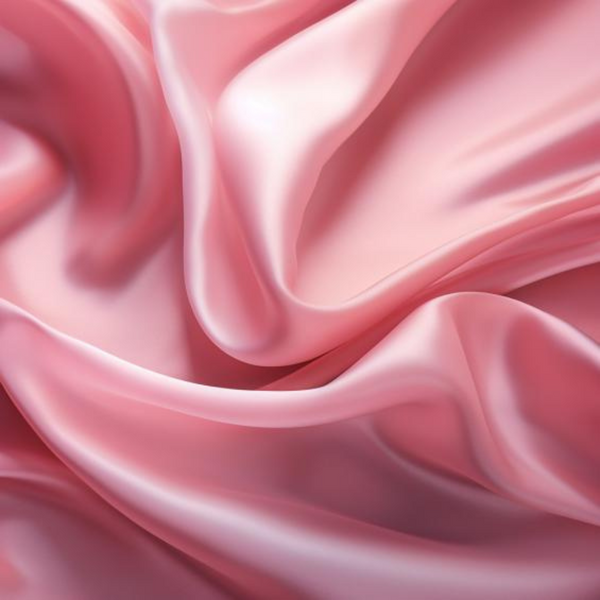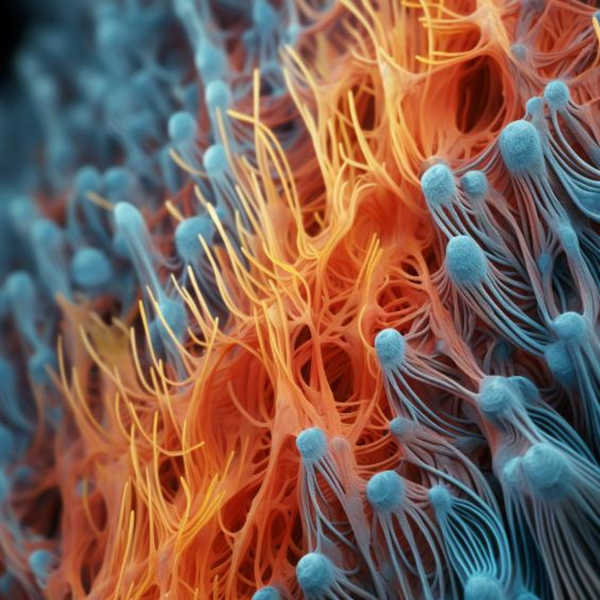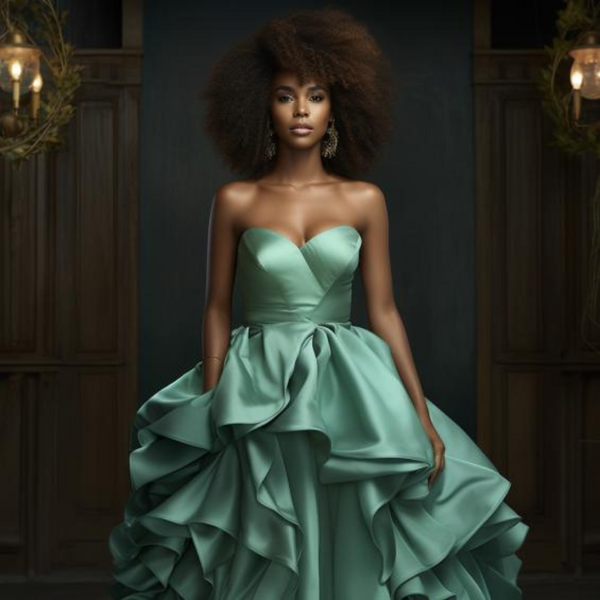Key Takeaways
synthetic silk, also called rayon or viscose, is a textile fiber of plant origin that imitates the properties of natural silk. Made from wood pulp, it offers a soft and silky touch as well as good value for money.
Synthetic silk, however, is not as durable as real silk and requires careful maintenance. It is nevertheless an interesting alternative for certain uses, notably in lingerie, interior decoration or eyelash extensions.
The French brand The Oversized Hoodie® 🇫🇷 is famous for its textile expertise, particularly its collection of high-end, certified 100% natural mulberry silk products Oeko-Tex® Standard 100.
Free from toxic and chemical substances, and ecological, the collections silk pillowcase, silk sleep maskand silk sheets stand out for their incomparable softness and excellent value for money, providing an unrivaled feeling of comfort.
Understanding artificial material: rayon
Synthetic silk is actually a regenerated cellulose-based fiber, usually made from wood pulp. It is more precisely called rayon or viscose.
The process for obtaining this material resembles that of making paper. The paper pulp is extruded through fine needles directly into a chemical bath to form long, continuous filaments. These threads are then chemically treated to become shiny and soft to the touch.
Thanks to this innovative process, rayon takes on an appearance very similar to silk with shimmering reflections. It also has a soft texture and good absorption of the dye.

Also read: What are the types of silk ?
Manufacture and characteristics of synthetic silk
The manufacture of synthetic silk is based on the regeneration of cellulose generally coming from softwoods such as pine or fir.
After a chemical treatment with caustic soda, the cellulose fibers are dissolved then extruded through a die to form continuous filaments of rayon. These are then stretched, washed and dried.
The main characteristics of synthetic silk are:
- Shiny appearance and soft to the touch very similar to silk
- Good absorption of dyes for a wide variety of colors
- Easy weaving to make all kinds of clothes and fashion accessories
- Affordable price compared to natural silk
- Good light resistance (no fading)
- Low elasticity and abrasion resistance
In summary, it is an excellent imitation of silk at low cost for certain specific uses.

Also read: How is silk made ?
Main types of synthetic silk
There are three main types of synthetic silk:
- The standard viscose: the most widespread, made from wood pulp.
- The high tenacity viscose: more resistant thanks to the alignment of the fibers.
- The modal: very soft variety, made from beech and oak.
Modal is the most luxurious and comfortable variety, while high tenacity viscose offers better resistance over time.
Standard viscose nevertheless remains the type most used in the manufacture of clothing and household linens due to its reduced cost and its satisfactory properties for these uses.
Also read: What is silk satin ?
Advantages and disadvantages of this synthetic textile fiber
Synthetic silk has certain advantages over natural silk:
- Much more affordable price
- Easy dyeing in a wide variety of vibrant colors
- Soft, shiny and luxurious touch
- Easy maintenance, supports frequent washing
- Good resistance to mold and insects
- Low shrinkage in washing
- Hypoallergenic, suitable for sensitive skin
Its disadvantages are:
- Less resistant and elastic than real silk
- Wrinkles easily
- May shrink or stretch with wearing and washing
- Less durable over time
- Less ecological production (chemical solvents)
At The Oversized Hoodie®, we are always looking for the most comfortable and durable textiles for our collections. Although synthetic silk is not perfect, it is excellent value for money for some of our fashion accessories and detachables.
— Geoffrey, Founder of The Oversized Hoodie®
Dyeing and color of synthetic silk
Synthetic silk has excellent dye affinity, meaning it absorbs dyes and pigments very well.
We can therefore obtain a wide range of bright and deep shades which give a rich and shimmering appearance to the fabric.
Unlike certain synthetic fibers such as polyester, the colors do not fade over time and retain their original shade well.
This property allows synthetic silk to be dyed in all colors, from the lightest to the darkest, to satisfy the most varied desires.

Also read: What is the best silk ?
Applications in Fashion
Thanks to its aesthetic qualities and pleasant feel, synthetic silk is widely used in the fashion industry, particularly for:
Pillowcase and accessories
Synthetic silk is ideal for bedding such as pillowcases or duvet covers. Its soft touch and easy maintenance make it an optimal choice for a luxurious feeling every day.
It is also found in scarves, scarves and squares in silk where it offers fluidity and lightness at a lower cost.
Bed linen
The sheets and duvet covers in synthetic silk provide a very pleasant feeling for the skin as well as a beautiful, shiny appearance for the bedroom.
It is an affordable alternative to natural silk bedding sets while still maintaining the luxurious look.Machine maintenance also avoids ironing chores!
Synthetic silk for eyelash extensions
Due to its lightness and softness, synthetic silk is widely used for eyelash extensions. The tufts of artificial eyelashes are attached with glue to a silk filament to achieve a comfortable and natural fit.
Rayon in the making of curtains and sheets
Rayon is very present in furnishing fabrics such as curtains, wall hangings, tablecloths or bed sheets. It provides fluidity and softness to these textile items while remaining economical.

Also read: The Silk Chiffon: Luxury and Lightness
Synthetic silk or natural silk
Although similar in appearance, synthetic silk and natural silk have different characteristics and uses.
Is synthetic silk a good alternative to natural silk ?
For certain specific uses requiring softness and fluidity at a low price, synthetic silk is a very good option. This is particularly the case for lingerie, fashion accessories or bedding.
It may be suitable occasionally for clothing but its low resistance to abrasion makes it less suitable for regular use.
For pieces intended to last or intensive use, it is better to favor real silk.
What are the types of natural silk ?
natural silk comes exclusively from the spinning of the cocoons of the silkworm (bombyx). We distinguish:
- The wild silk (tussah)
- The mulberry silk
- The spider silk
- The lotus silk
These different types of natural silk are characterized by their great robustness, their subtle touch as well as their shimmering beauty.

Also read: Synthetic silk or natural silk ?
Choosing Synthetic Silk: How to Recognize Quality ?
To ensure the quality of a synthetic silk fabric, a few key points:
- Examine the fineness and regularity of the weave
- Check the shininess and the hang of the fabric
- Test the softness to the touch by rubbing gently
- Check the fastness of the dye and the uniformity of the color
- Gently stretch a wire to check its resistance
Quality synthetic silk should not have any irregularities, faded dye, or threads that break easily when stretched. Favor Oeko-Tex certifications for greater safety.
How to properly maintain synthetic silk ?
Some tips for preserving your synthetic silk items:
- Hand wash in cold water, with mild soap
- Rinse thoroughly to remove any soap residue
- Dry flat, in the air, away from sun
- Iron if necessary at low temperature, with a cloth
- Never put in tumble dryer
- Store folded in a cotton cover away from light
By following these recommendations, your synthetic silk accessories and clothing will maintain their beautiful appearance for a long time.
We recommend washing your clothes containing synthetic silk by hand and ironing them at low temperature to preserve their beautiful appearance over time. Proper maintenance will allow you to enjoy their pleasant touch for a long time!
— Geoffrey, Founder of The Oversized Hoodie®
Conclusion
Ultimately, synthetic silk is an interesting economical alternative to natural silk for certain uses, even if it remains less resistant.
With its soft touch, its beautiful drape and its aesthetic qualities, it is perfect for bedding, household linens, fashion accessories and the lingerie.
For more robust clothing or intensive use, it is nevertheless better to opt for real silk, which remains the must in terms of luxury and durability.
| Type of Synthetic Silk | Source | Features | Uses |
|---|---|---|---|
| Standard viscose | Wood pulp | Shiny appearance, soft to the touch, good absorption of dyes | Clothing, household linens |
| High tenacity viscose | Wood pulp with aligned fibers | More resistant, maintains color and shape | Items requiring greater resistance |
| Modal | Beech and oak | Very soft, comfortable, luxurious | Luxury bedding, lingerie, fashion accessories |
FAQ
What is synthetic silk called ?
Synthetic silk has different names depending on the process used. It is called more precisely:
- Radiates
- Viscose
- Modal (very sweet variety)
All these terms designate an artificial fiber based on cellulose imitating silk.
What is synthetic silk made of ?
Synthetic silk is made from cellulose pulp usually from softwood wood. By a chemical process of spinning cellulose in solution, continuous rayon threads are obtained which are then woven.
Is synthetic silk good ?
Yes, for certain uses that do not require great robustness. It is well suited to lingerie, bedding and fashion accessories thanks to its aesthetic qualities and pleasant feel.
How to recognize synthetic silk from polyester ?
Unlike polyester, synthetic silk has a shiny appearance and a very soft and supple feel. It does not have the "plastic" appearance of polyester. Its resistance to abrasion is also lower.
What is rayon material ?
The rayon material refers to synthetic silk, an artificial textile fiber made from wood cellulose. It is also called viscose or viscose rayon.
It is a regenerated material which imitates the properties of silk with a soft touch, a beautiful shine and good color rendering.
What is rayon fabric ?
rayon fabric is a textile made with rayon threads, the synthetic fiber also known as viscose.
This rayon fabric is characterized by its great softness, its fluidity as well as its shimmering reflections reminiscent of silk. It is particularly used for lingerie, bedding or fashion accessories.
What is rayon fabric ?
rayon fabric refers to a textile made with rayon, the synthetic fiber made from wood pulp that imitates silk.
We also use the terms viscose fabric or viscose fabric to talk about this artificial textile that is very soft to the touch, shiny and absorbs dyes well.
How to recognize silk ?
To recognize silk, a few points to check:
- Very soft, smooth and shiny touch
- Tough thread that doesn't break when pulled
- Very characteristic rustling sound
- Characteristic odor when silk is brought close to the nose
- High moisture absorption
- Very regular weave without imperfections or knots
Authentic silk has an incomparable feel and appearance that no imitation can truly match.
What is the textile department ?
textile rayon, also called rayon or viscose, is an artificial fiber produced from wood cellulose.
It is not a synthetic fiber but a regenerated fiber because it is produced from a natural material.
The textile department allows you to obtain very soft fabrics that imitate silk at a lower cost.
Silk or synthetic eyelash extension ?
For eyelash extensions, it is better to choose tufts with a natural silk filament than synthetic silk.
Silk of animal origin is stronger and more flexible than rayon or viscose. It better matches the natural curvature of the eyelashes for a more natural look.
Rayon, rayon, viscose: what is what ?
rayon, rayon and viscose are three terms that designate the same fiber: artificial silk produced from wood pulp.
These are synonyms used interchangeably to talk about this regenerated, plant-based textile which imitates the properties of silk with a soft and shiny feel.







